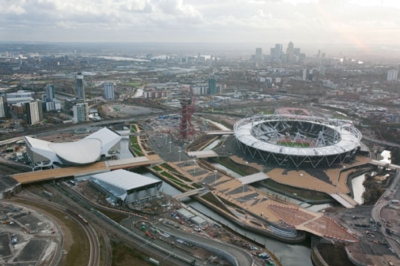
The Olympics are obviously somewhat more prestigious than the World Student Games, but it’s striking how similar the rhetoric of the Sheffield councillors was to that of Ken Livingstone as Mayor of London. The Olympics, Livingstone often said, were not really about sport, but something more important – a chance to redevelop the city. The Greater London Authority was not the GLC, it couldn’t build new housing estates, schools, town centres and infrastructure by itself. So instead, there was a pact – the sure-to-be-overfunded sports event could make those things possible, with money coming in from left, right and centre. Some of it has indeed come to pass. Stratford, the grim post-industrial East London district that hosts most of the Olympics, is now probably the best connected place in the UK, with an International train hub and links to half of London’s tube lines. Stratford High Street has been comprehensively redeveloped, an “Olympic Village” with a large City Academy spreads across the formerly poisoned post-industrial wastes of the Lea Valley, a new public park awaits post-games Londoners, and a new “town centre’”– well, a shopping mall – is the fulcrum for the whole thing.
The problem, and Sheffielders could have told London this for free, is that these things always come on the Games’ own terms. By that I mean that the type of redevelopment they want and require has strings attached. Funding will be controlled by labyrinthine, verging-on-corrupt Public Private Partnerships, the new housing and spaces will be largely private, and the city will be left with an enormous bill. At the London Olympics, that’s the case on a truly epic scale.
As the political geographer Stephen Graham has made clear, the Olympics site will not just be privatised, but will be controlled by a spectacularly brutal security apparatus. Some of this is now even familiar and accepted, although looked at baldly it’s shockingly dystopian. There will be unmanned drones passing over the Westfield shopping mall in Stratford, aircraft carriers on the Thames, surface-to-air missiles on site, and the largest quasi-military mobilisation on British soil since 1940. That’s during the Games itself, but the new town-sized redevelopment in Stratford has been designed with similar security-consciousness – or, as it used to be called, paranoia.
The new developments in Stratford High Street, ten or so multicoloured buy-to-let towers, called things like “Icona” and “Aurora”, all designed by the corporate architects Stock Woolstonecroft, are gated and guarded against the impoverished area of London into which they were inserted. The more high-end, expensively-built and carefully planned Olympic Village is an enclave, recently bought up by the Qatari government’s property development arm, Qatari Diar, a readymade luxurious Ballardian dystopia. The town centre, i.e. the vast Westfield mall, is reached by the pedestrian via a tight and easily closed off bridge, a castle of retail that can be sealed off in the event of riot. It’s fair to say that none of these things were planned by Livingstone or the GLA, but they can surely not be surprised by them.

